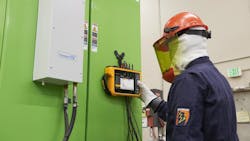Energy waste has an enormous impact on facilities of all sizes, causing challenges like increased financial costs, asset performance concerns, and reduced ability to meet environmental objectives. In many commercial and industrial environments, reducing energy waste is one of the best ways to reduce business utility costs. Learning how energy is used throughout your facility is the first step to eliminating waste. Test tools like power analyzers can give customers insight into their electrical installation to understand how power is utilized, allowing opportunities to reduce capital expenses, monitor asset performance, and reach environmental objectives.
When used correctly, a good power analyzer can provide a comprehensive understanding of power consumption, which can be broken down into four parts (active power, harmonics, unbalance, and neutral current). Using a power analyzer allows teams to record these power parameters, providing additional cost data that can be used to understand whether it makes sense to install mitigation equipment/systems. If so, a power analyzer can help determine what the expected energy cost savings will be.
Common areas for savings include cooling/heating, lighting, and compressed gas systems; manufacturing processes; and day-to-day office operations. However, companies can use a power analyzer to gather data for several different objectives.
Benchmarking energy consumption
Benchmarking energy use across the facility is a good way to locate electrical waste and can provide immediate benefits as waste is identified and corrected. For example, your survey may identify areas of the facility that are closed during the weekends and could be shut down or areas where lights are left on even while no one is working.
Benchmarking also acts as a comparison point for typical energy usage, which can then be used during routine maintenance to help identify worsening issues in individual assets.
Analyzing and reducing energy waste sources
Energy is lost as electricity flows, especially in conductors. To minimize this loss, you can reduce current or resistance by using appropriately sized conductors based on load, distance, and safety factors.
Motors often consume the majority of the electrical power in processes. When analyzing waste, consider the following questions:
- Are efficient motors installed?
- Are variable-speed drives (VSDs) being used?
- Are motors appropriately sized for their loads?
- Do some areas have motors operating when processes are down?
- Are compressor motors operating continuously? (If so, it could indicate a need for a gas leak investigation.)
Identifying transient voltages and imbalances
Ensuring consistent voltages within equipment specifications can reduce waste. Voltage that is higher than necessary for a given piece of machinery can cause excess energy consumption. Installing a voltage regulator or a transient voltage filter can help assets operate more efficiently, reducing energy use.
Measuring and diagnosing harmonic levels
Harmonics distort voltage and current, leading to heat buildup in conductors, motor windings, and transformers. Overheating can cause asset damage or even failure.
Flickering lights can also be a symptom of harmonics causing a power quality issue. Lighting fluctuation can impact human health, be a severe annoyance, or hinder operations by creating safety hazards caused by inadequate lighting. Harmonic distortion can be reduced by installing filters on equipment that contribute to harmonics.
Measure unbalanced loads
In 3-phase systems, unbalanced loads lead to motor inefficiencies and overheating. Both of these directly waste energy. Power quality analyzers can help detect and address the causes of torque pulsations, vibrations, and mechanical stress. These can be corrected by balancing loads across phases as evenly as possible and replacing blown fuses in capacitor banks.
In addition to these steps, understanding how electricity costs are applied by the electrical utility can help identify whether rates are constant during the day and what demand charges or other penalties might be adding to the facility’s electrical cost.
Reducing waste with tools and programs
Companies trying to achieve lower emissions targets or participate in cap-and-trade programs will reap significant benefits from measuring the quality and consumption of power in each plant. In addition to using a power analyzer, ask a local electrical supplier about opportunities to reduce your energy bill. In some cases, there are programs to provide capital expense reimbursement when improving energy efficiency.
While electrical contractors focus on ensuring electrical installations are safe, reliable, and efficient, further steps can be taken to minimize waste and improve efficiency. Whatever your reason for finding and eliminating energy waste, power quality testing tools are key to finding waste and correcting it.
About the Author

Jason Axelson
Jason is a subject matter expert at Fluke specializing in power quality, electrical test equipment, and product applications. With deep experience supporting both customers and distribution partners, he helps professionals select, operate, and troubleshoot a wide range of diagnostic tools, including power quality analyzers, battery testers, acoustic imagers, and thermal imagers. Jason regularly leads application-based training sessions, drawing on his hands-on knowledge to bridge the gap between technical challenges and practical solutions across industries.
